- »Close to the Material« Mexico City, 2021
- »Meuser« Stockholm, 2019
- »Kann ich mich hier auch selbst einweisen?« Berlin, 2017
- Group Exhibition »GATHERED FATES curated by Ignasi Aballí« Berlin, 2015
- »Herr Ober, zwei Doppelte« Berlin, 2014
- »und Erich mittendrin« Berlin, 2012
- Group Exhibition »OWL STRETCHING TIME« Berlin, 2010
- Group Exhibition »SUMMER SHOW« Berlin, 2009
- Group Exhibition »DOG STAR MAN« Berlin, 2009
- »Arbeiten 1990 - 2007« Berlin, 2008
- »säen spritzen hacken« Berlin, 2002
- »Meuser« Stockholm, 1992
- Group Exhibition »Mnemosyne 1273« Stockholm, 1992
- Group Exhibition »Art against AIDS« Stockholm, 1991
- »Meuser« Stockholm, 1990
-
Conversation between Franz Ackermann and Meuser, in: Meuser. Knautsch, Kunsthalle Karlsruhe, 2011
-
Meuser, Ulrike Groos, Michael Krajewski: A Conversation. Countering Pathos with Down-to-Earth Ruhrpott Attitude in: Meuser, Kunsthalle Düsseldorf, 2008
-
Magdalena Kröner: Chance Acquaintances, in: Meuser, Kunsthalle Düsseldorf, 2008
-
Veit Loers: From Iron to Underpants, in: Meuser, Kunsthalle Düsseldorf, 2008
-
Cornelius Tittel: Weil ich auf Dicke stehe. Meuser, Blau Magazine, 2016
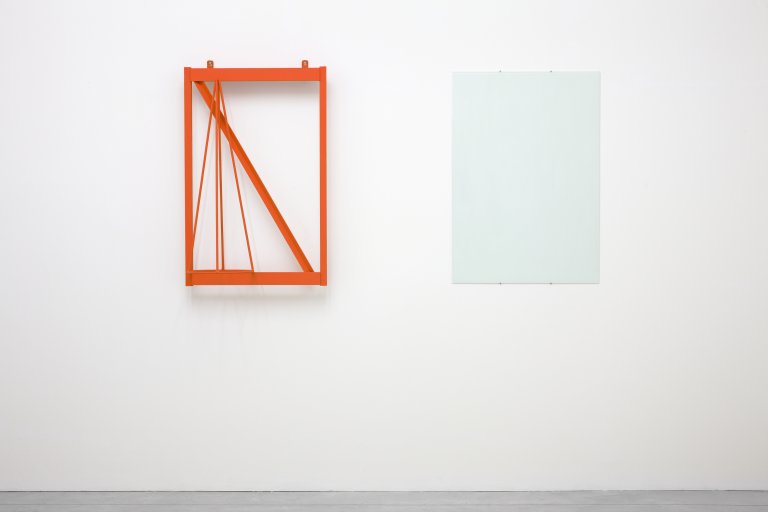
Meßstelle Meeresenge, 2007, steel, mennige color, oil and glass, 2 parts, 102 x 66 x 11 cm + 100 x 70 cm, overall dimensions installed 107,5 x 208 x 31 cm
Meuser »Arbeiten 1990 - 2007«
Berlin, February 02, 2008 - March 07, 2008
Galerie Nordenhake is pleased to present a solo exhibition by the German artist Meuser. On display will be works made during the 90´s, as well as a new piece prepared for the exhibition. Using almost exclusively salvaged pieces of scrap metal, Meuser´s work is cast somewhere between sculpture, painting, and found objects. His presentation of the refuse of industrial production can best be classified as reconfigured fragments, structural combinations that form an image in the artist´s own consciousness. Meuser tries to avoid any common associations we may have to daily life, instead preferring an open, perceptive situation in which the relation of memory to visual stimuli becomes important.
Having grown up in Essen, the heart of Germany´s industrial Ruhr valley, Meuser is the son of an engineer who worked in the steel industry. Although his biography may explain Meuser´s predisposition to his choice of material, his method favors approaching objects as though they were unfamiliar. This creates a necessary distance. Meuser possesses a tendency to rigorously demand an associative, yet contradictory, encounter between the elements in each piece. This tension between material and form, object and space, sensation and cognition provides the necessary elements in Meuser´s work.
In "Herr Ober, Zwei Doppelte" ("Waiter, Two Double Shots", 1990), the weight of a roughly welded metal joint is counterpoised by the lightness of a pane of glass. The slight association of a gruff and well-worn bar surface, as well as a shot glass, enters the mind, but its indirectness remains fleeting. Any direct narrative implications are removed. Meuser is aware of the fact that the viewer generates "meaning" and that this cannot be controlled. The relationship to the title, normally a primary point of entry in an artwork, is associative and not immediately accessible. The combination of crude humor, such as in the title "Der Mond von Wanne-Eickel" (a popular German "Schlager" song from the period of the German Economic Miracle, 1990) with an unpretentious handling of the material, visible in the technical imperfections, displays an ironic irreverence for highbrow art snobbery.
Meuser also subjects his work to pictorial and spatial considerations. The raw material is neutralized by a restrained, painterly treatment. The surface, like a canvas, is evenly primed with anticorrosive coating. This coating produces the reddish-brown color typical of many of Meuser´s works, which is somewhat rusty as for example in "Erwin Rommel II" (1990). The heavy metal frame is placed neatly on the wall, as through it were a tableau. Meuser calls this process "walling". A rough wedge of metal, jaggedly sticking out at the lower left-hand corner, interrupts the 2-dimensionality of the surface, pushing the piece away from the wall. Any monumental ambitions are repressed through an imposed spatial awareness of the gallery, in which Meuser´s materials always maintain a relationship to the wall, on which an image is presented, and to the room, where the viewer is located. Much more about seeing than thinking, Meuser produces a sensual, sensorial experience of the weight of the world.
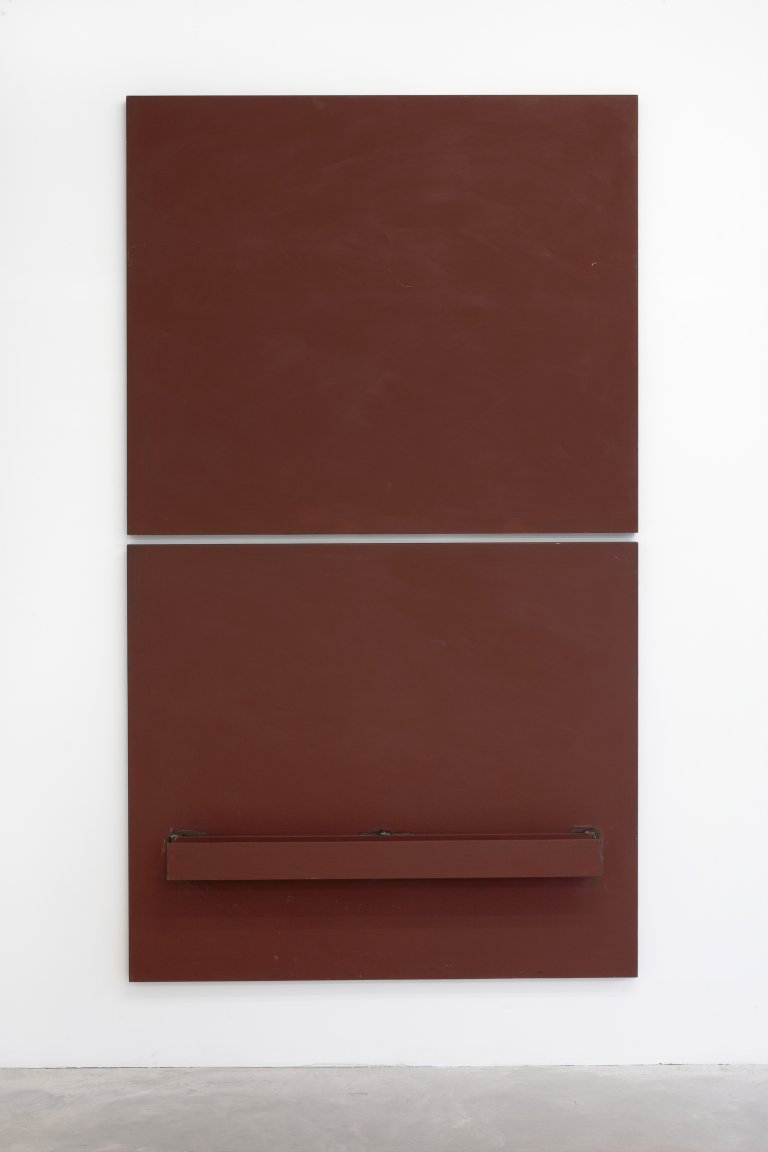
Red Bar, 1990, steel and primer, 2 parts, each 120 x 140 x 4 cm
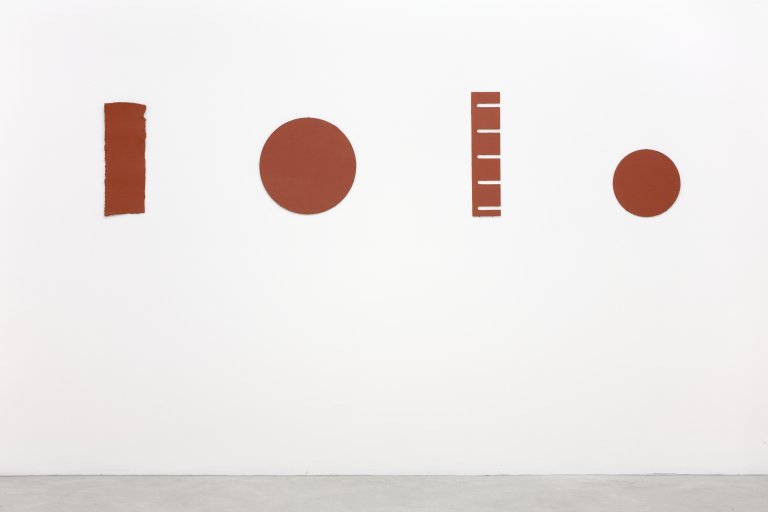
Der Mond von Wanne-Eickel, 1986, steel, primer, 4 parts, overall dimensions installed 66 x 220 cm
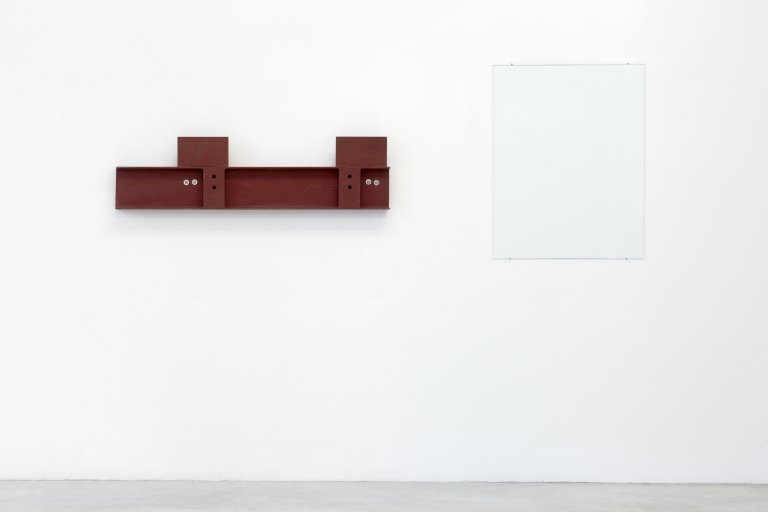
Herr Ober, zwei Doppelte!, 1990, steel and primer, glass, two parts, 34 x 127 cm + 90 x 70 cm, overall dimensions installed 90 x 226 cm
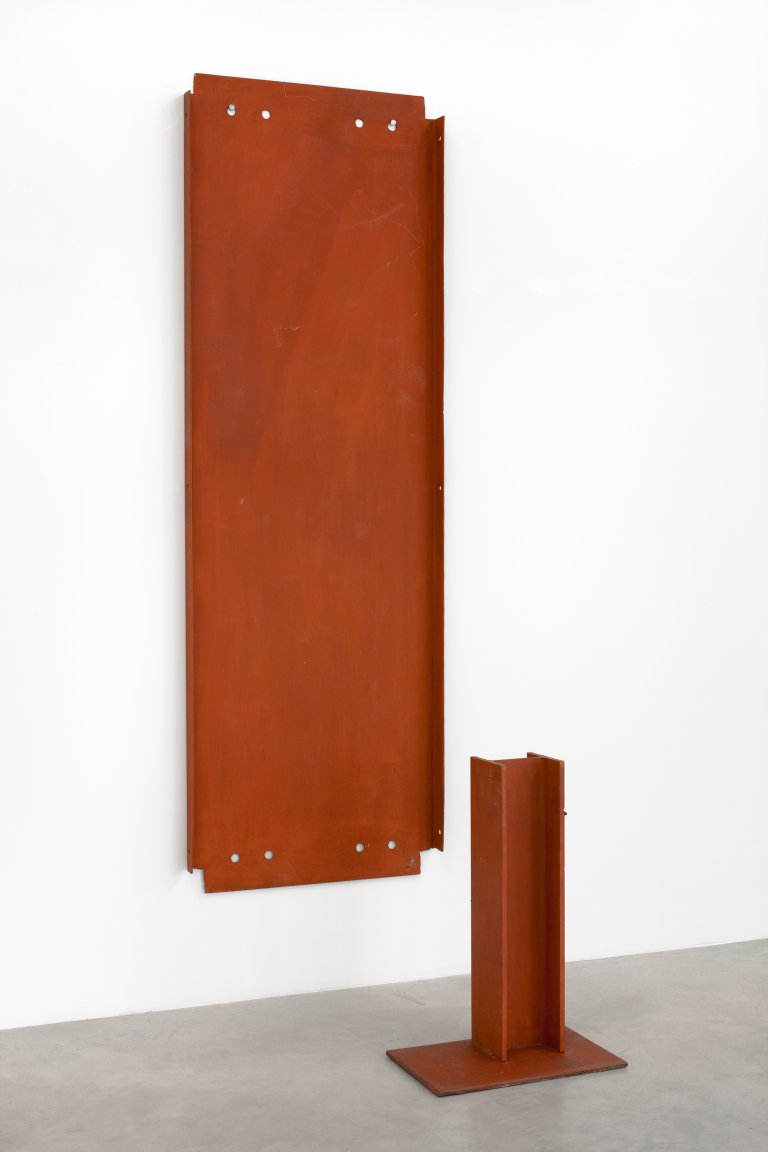
Flusskrebs, 1990, iron and primer, 2 parts, installed 202 x 68 x 50 cm
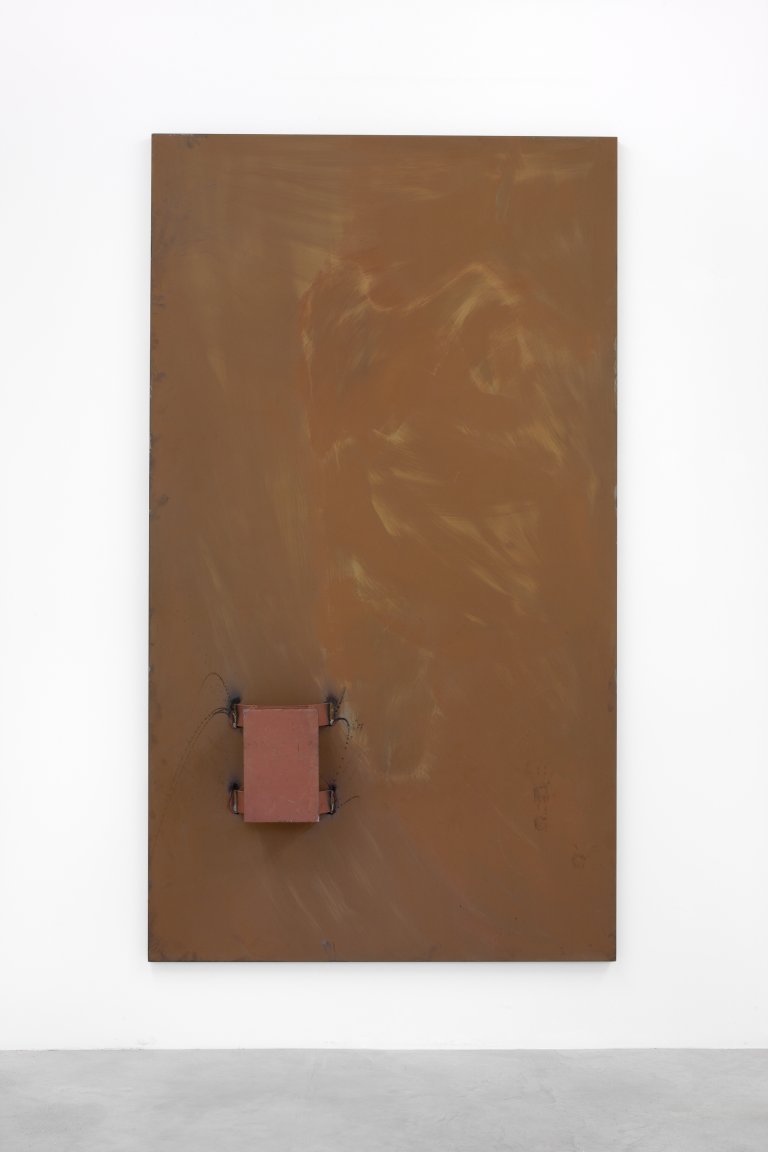
Erwin Rommel II, 1990, steel and primer, 230 x 130 cm